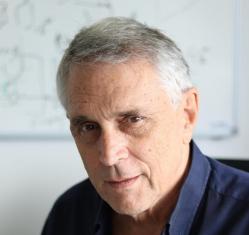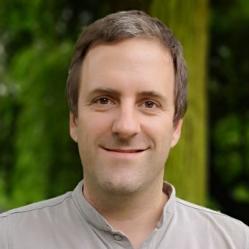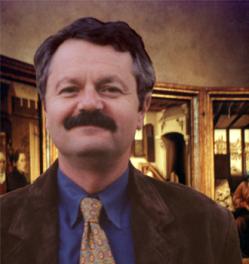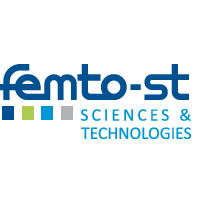9h00-9h30 - Coffee & Welcome
9h30-10h30 - Prof. Demetri Psaltis (Ecole Polytechnique Fédérale de Lausanne (EPFL), Switzerland)
 .
.
Demetri Psaltis is Professor of Optics and the Director of the Optics Laboratory at the Ecole Polytechnique Fédérale de Lausanne (EPFL). He was a professor at the California Institute of Technology from 1980 to 2006. He moved to EPFL in 2007. His research interests are imaging, holography, biophotonics, nonlinear optics, and optofluidics. Professor Psaltis is a fellow of the IEEE, the Optical Society of America, the European Optical Society and the Society for Photo-optical Systems Engineering. He received the International Commission of Optics Prize, the Humboldt Award, the Leith Medal, the Gabor Prize and the Joseph Fraunhofer Award/Robert M. Burley Prize.
Learning, neural networks and optics
Abstract : Learning to perform various tasks by training neural networks has been linked to optics for a long time. The remarkable progress that has been achieved in recent years with “deep learning” networks, has led to new many ideas for how to use learning techniques in the design and operation of optical systems and vice-versa. We will present results from this recent activity with particular emphasis of how deep neural networks can enhance the capabilities of optical imaging systems.
10h30-11h30 - Prof. Sylvain Gigan (Laboratoire Kastler Brossel, Sorbonne Université, Paris)

Sylvain Gigan is Professor in Physics at Sorbonne Université in Paris, and group leader in Laboratoire Kastler-Brossel, at Ecole Normale Supérieure (ENS, Paris). His research interests range from fundamental investigations of light propagation in complex media, biomedical imaging, sensing, signal processing, to quantum optics and quantum information in complex media. He is also the cofounder of a spin-off: LightOn (www.lighton.io) aiming at performing optical computing for machine learning and Big Data. He was awarded the Fabry de Gramont Prize of the French Optical Society in 2016, The Joseph Fourier ATOS prize in 2018, and is the recipient of two ERC grants in 2011 and 2016.
http://www.lkb.upmc.fr/opticalimaging/
A sneak peek with light into opaque materials
Abstract : Complex heterogeneous materials, that scatter light in a highly complex way, present a huge challenge for imaging (think of seeing inside or through milk or biological tissues) and a very interesting playground to study fundamental issues of wave physics. In my talk, I will discuss how shaping the wavefront of a laser allows imaging in an through complex media, well beyond what was conventionally thought possible. I will also discuss how we can unravel some very fundamental properties of waves in disordered media.
11h30-12h30 - Prof. Charles M. Falco (College of Optical Sciences and Department of Physics,University of Arizona, Tucson)

Professor Charles Falco has joint appointments in Optical Sciences and Physics at the University of Arizona where he holds the UA Chair of Condensed Matter Physics. He is a Fellow of the American Physical Society, the Institute of Electrical and Electronics Engineers (IEEE), the Optical Society of America, and the Society of Photo-optical Instrumentation Engineers (SPIE), has published more than 275 scientific manuscripts, co-edited two books, has seven U.S. patents, and given over 400 invited talks at conferences, research institutions, and cultural organizations in 32 countries. However, in addition to his scientific research, he was co-curator of the Solomon R. Guggenheim museum's "The Art of the Motorcycle" which, with over 2 million visitors in New York, Chicago, Bilbao, and the Guggenheim Las Vegas, was by far the most successful exhibition of industrial design ever assembled. More recently, he and the world-renowned artist David Hockney found artists of such repute as van Eyck, Bellini and Caravaggio used optical projections in creating portions of their work. Three international conferences have been organized around these discoveries, and recognition for them includes the Ziegfield Lecture Award from the National Art Education Association, the Dwight Nicholson Medal from the American Physical Society, and a presentation in the opening ceremony of the 2015 United Nations International Year of Light.
https://wp.optics.arizona.edu/falco/
The Science of Optics; The History of Art
Abstract : Recently, renowned artist David Hockney observed that certain drawings and paintings from as early as the Renaissance seemed almost "photographic" in detail. Following an extensive visual investigation of western art of the past 1000 years, he made the revolutionary claim that artists even of the prominence of van Eyck and Bellini must have used optical aids. However, many art historians insisted there was no supporting evidence for such a remarkable assertion. In this talk I show a wealth of optical evidence for his claim that Hockney and I subsequently discovered during an unusual, and remarkably productive, collaboration between an artist and a scientist. I also discuss the imaging properties of the "mirror lens" (concave mirror), and some of the implications this work has for the history of science as well as the history of art (and the modern fields of machine vision and computerized image analysis). These discoveries convincingly demonstrate optical instruments were in use -- by artists, not scientists -- nearly 200 years earlier than commonly thought possible, and account for the remarkable transformation in the reality of portraits that occurred early in the 15th century. (https://wp.optics.arizona.edu/falco/art-optics/)
Acknowledgments : This work was done in collaboration with David Hockney. We gratefully acknowledge David Graves (London), Ultan Guilfoyle (Guggenheim), Martin Kemp (Oxford U.), Masud Mansuripur (U. Arizona), José Sasián (U. Arizona), Richard Schmidt (Los Angeles), and Lawrence Weschler (The New Yorker) for a variety of valuable contributions to our efforts.

